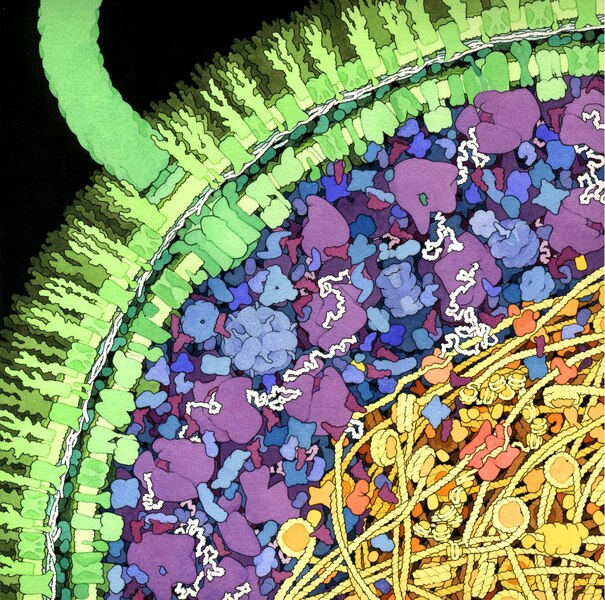In the article titled, Scientists discover the possible triggers for bacterial pathogens, opening the door for new treatment strategies, the reporter discusses how Alexander Fleming’s unintentional discovery represented a crucial turning point in medical history and sparked the creation of several additional antibiotics, saving countless lives in the process. This famous Scottish pharmacist discovered penicillin, the first antibiotic, in 1928 and since then many others have followed in his footsteps. Additionally, his discoveries led to the idea that “extraordinary appearances” should not be ignored. His famous sentiments hold true to multiple scientific discoveries; this is including a group of scientists at UNLV who are studying shigella.
In the picture above you can see Shigella in a stool sample.
Shigella is a harmful bacteria that can cause many issues in the human body such as stomach cramps, fever, diarrhea (which is frequently bloody), and can also be fatal. Shigella infection is an intestinal ailment caused by a family of bacteria called shigellosis. Shigella spreads quickly. When individuals come into touch with and ingest quantities of germs from an infected person’s feces, they get infected with shigella.
Initially I was not engaged with this topic because I had no idea how it could be relevant to my life. However, my recent work as an EMS volunteer has proved me wrong. Although I have not seen a patient who had shigella, I have observed many other patients who experienced similar bacterial diseases and am eager to find the best way to treat them.
Moreover, these scientists are focused on the proteins in shigella that are called VirB. VirB proteins act as a switch in the bacteria and bind to Shigella by interacting with Shigella’s DNA. This interaction between VirB and Shigella’s DNA is a key step in the process that activates the bacterium’s virulence genes. Essentially, the DNA is what causes disease in people. Researchers found that by interfering with the way VirB bonds to the shigella, they can minimize the effects it has on humans.
Furthermore, this research is largely important to the understanding of how proteins such as VirB are able to turn harmless bacteria into deathly ones. Moreover, this insight is also helpful in the development of treatments for other diseases such as Campylobacteriosis, E coli, and Cholera which are caused by similar proteins in different bacterias.
After studying Organic Compounds in my AP Biology class, I was able to make connections to the material we have learned such as the different protein structures which heightened my interest in this topic even more. The reason that similar proteins are able to cause so many different diseases is because of the altercation in protein shape as well as body response. All proteins have specific shapes and structures that determine how the protein will interact with the human body. Additionally, there are four main protein structures including primary, secondary, tertiary, and quaternary which all play a role in how proteins behave. Moreover, all proteins have side chains which provide characteristics and make them different from one another. The side chains in proteins give amino acids characteristics and by changing one small detail you will change the structure (shape) of the protein and thus how it interacts with the human body.
To continue, E coli is a type of bacteria frequently discovered in both the human and animal intestines. Since it aids in digestion and the creation of several vitamins, it is often safe and even advantageous. However, some E. coli strains have the potential to be dangerous and contagious.
The photo above shows a cross section illustration of an E.coli cell.
However, the most important factor in this research is a molecule known as CPT, which is short for Camptothecin. Camptothecin was first identified as a topoisomerase inhibitor in 1966. Topoisomerases are nuclear enzymes involved in DNA replication (and more). To understand its role, you can think of Camptothecin as a key part in a puzzle involving Shigella. VirB acts as a switch to turn on the bacterium’s ability to cause disease in the human body. For this switch to work correctly, it needs Camptothecin. Camptothecin is the key that enables VirB to bind to Shigella’s DNA, which then activates the disease-causing process.
The researchers are interested in interfering with this binding process. By doing so, they aim to prevent Shigella from making people sick. This line of research isn’t just about Shigella. The hope is that the knowledge gained from studying this process could be applied to finding a solution for a whole group of diseases caused by different bacteria similar to Shigella.
So… what are YOUR thoughts on the research of Camptothecin’s role in Shigella’s causing a process that could lead to the investigation of new treatment? Are you optimistic about the potential impact on the future public health?




Leave a Reply